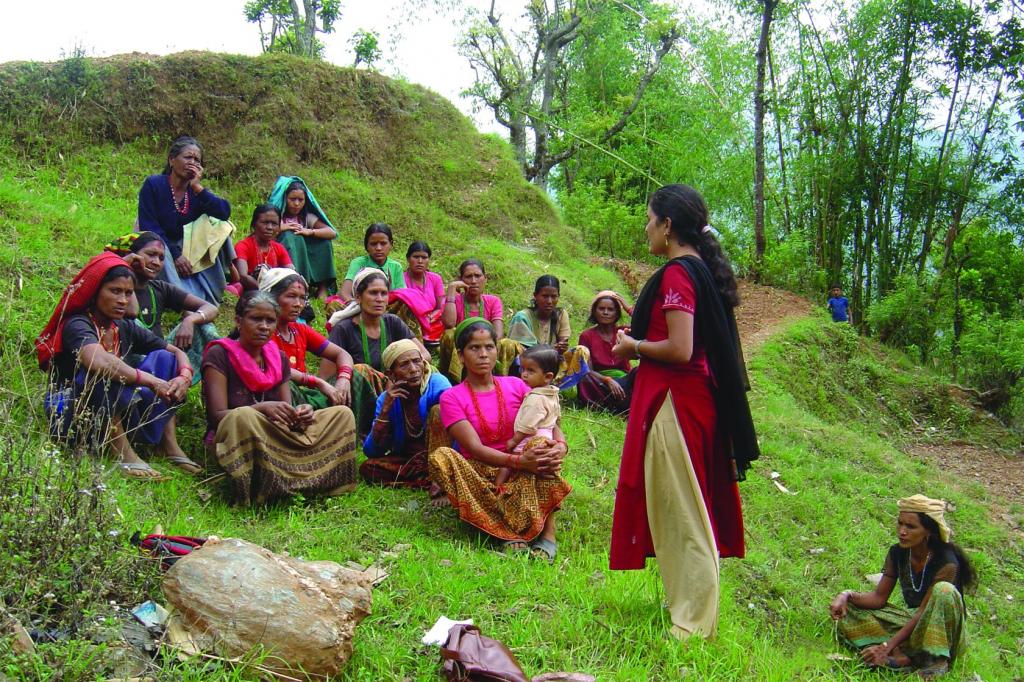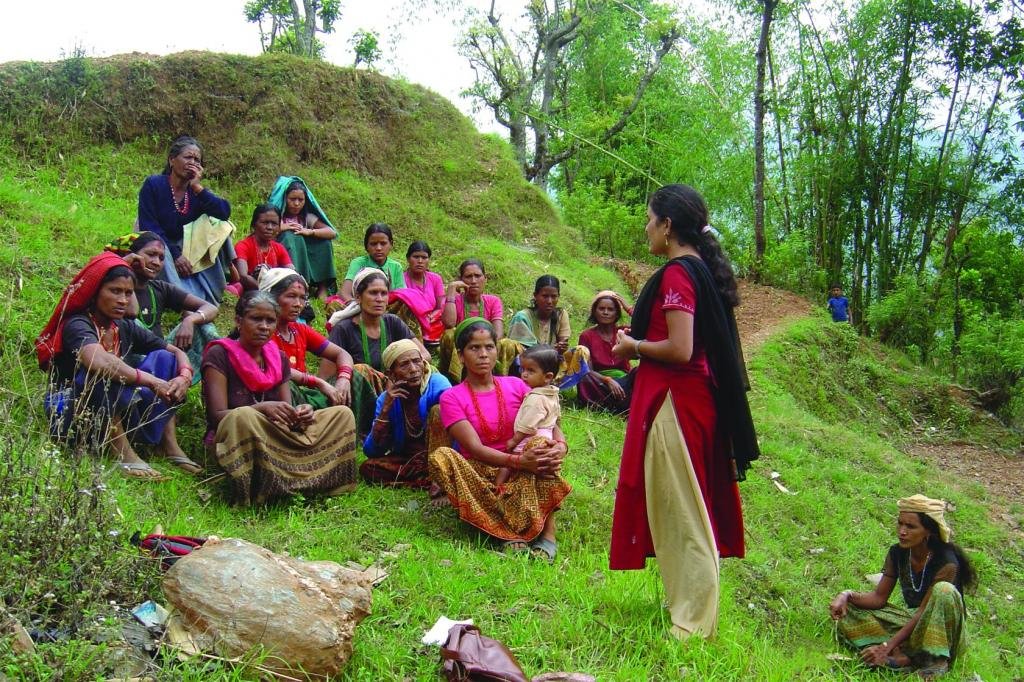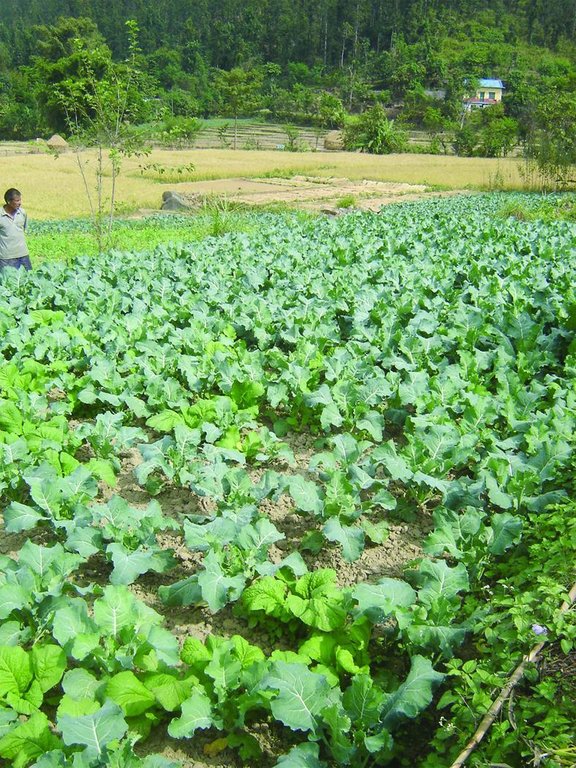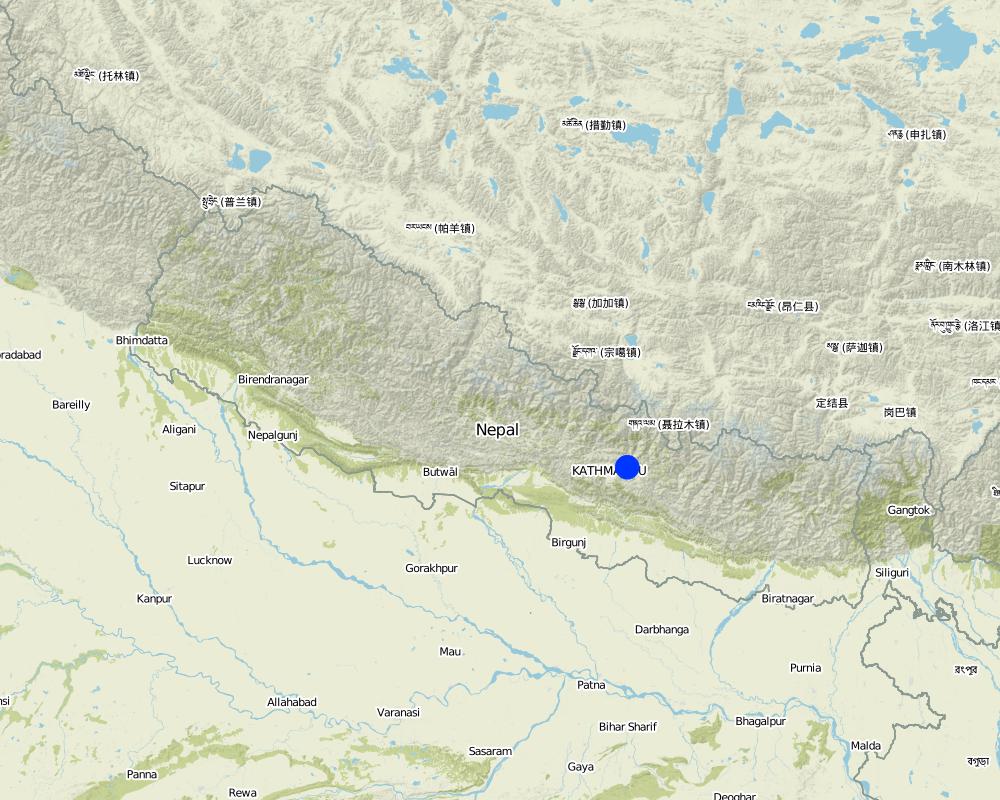Farmer-led experimentation [เนปาล]
- ผู้สร้างสรรค์:
- การอัพเดท:
- ผู้รวบรวม: Richard Allen
- ผู้เรียบเรียง: –
- ผู้ตรวจสอบ: Laura Ebneter
Krishak ko aguwai ma garine parikshan (Nepali)
approaches_2559 - เนปาล
ดูส่วนย่อย
ขยายทั้งหมด ย่อทั้งหมด1. ข้อมูลทั่วไป
1.2 รายละเอียดที่ติดต่อได้ของผู้รวบรวมและองค์กรที่เกี่ยวข้องในการประเมินและการจัดเตรียมทำเอกสารของแนวทาง
ผู้เชี่ยวชาญ SLM:
Soil Management Directorate
+977 1 5520314
Department of Agriculture
Harihar Bhawan, Lalitpur
เนปาล
ผู้เชี่ยวชาญ SLM:
Team Leader Sustainable Sustainable Soil Management Programme (SSMP)
+977 1 5543591
ssmp@helvetas.org.np
Sustainable Soil Management Programme (SSMP)
GPO Box 688, Kathmandu
เนปาล
ชื่อของโครงการซึ่งอำนวยความสะดวกในการทำเอกสารหรือการประเมินแนวทาง (ถ้าเกี่ยวข้อง)
Sustainable Soil Management Programme, Nepal (SSMP)ชื่อของโครงการซึ่งอำนวยความสะดวกในการทำเอกสารหรือการประเมินแนวทาง (ถ้าเกี่ยวข้อง)
HELVETAS (Swiss Intercooperation)1.3 เงื่อนไขที่เกี่ยวข้องกับการใช้ข้อมูลที่ได้บันทึกไว้ผ่านทาง WOCAT
ผู้รวบรวมและวิทยากรหลักยอมรับเงื่อนไขเกี่ยวกับการใช้ข้อมูลที่ถูกบันทึกผ่านทาง WOCAT:
ใช่
1.4 การอ้างอิงถึงแบบสอบถามเรื่องเทคโนโลยี SLM
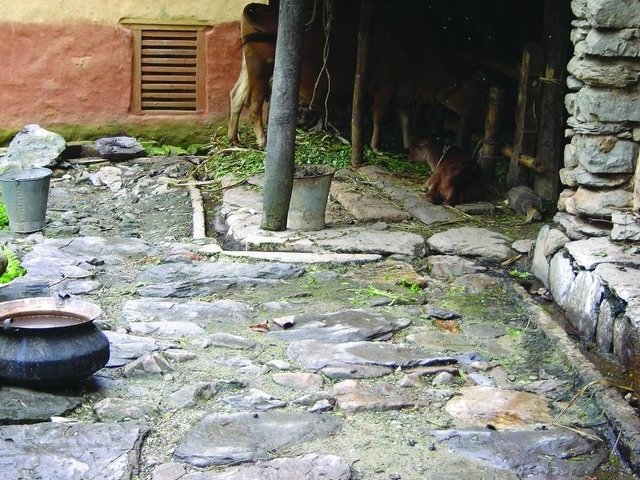
Improved cattleshed for urine collection [เนปาล]
Collection of cattle urine in improved cattle sheds for use as liquid manure and organic pesticide
- ผู้รวบรวม: Richard Allen
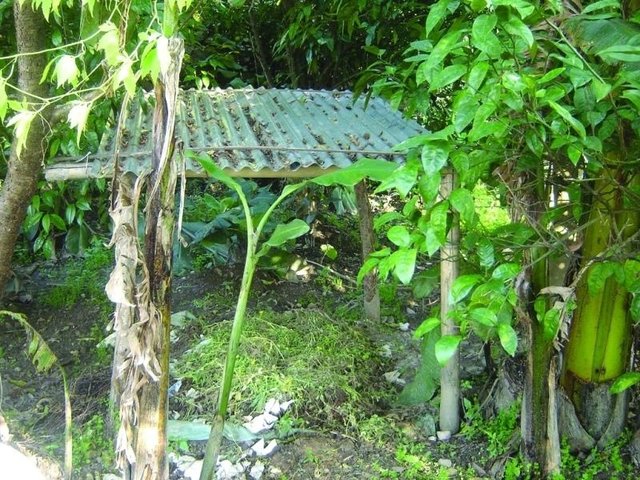
Improved compost preparation [เนปาล]
Improved compost preparation using a range of biomass and waste to produce high value fertiliser
- ผู้รวบรวม: Richard Allen
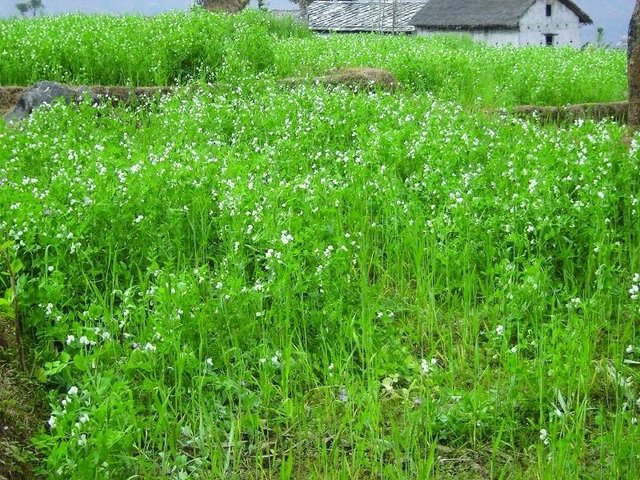
Legume integration [เนปาล]
Integration of leguminous crops as intercrops on terrace risers or as relay crops
- ผู้รวบรวม: Richard Allen
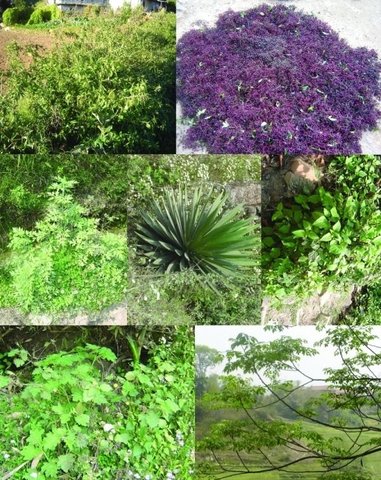
Organic pest management [เนปาล]
Promotion of botanical pesticides for organic pest management and liquid manure
- ผู้รวบรวม: Richard Allen
2. คำอธิบายของแนวทาง SLM
2.1 การอธิบายแบบสั้น ๆ ของแนวทาง
Participatory technology testing and adaptation through farmer-led experiments
2.2 การอธิบายอย่างละเอียดของแนวทาง
การอธิบายอย่างละเอียดของแนวทาง:
Farmer-led experimentation is a type of action research initiated and carried out by farmers in their own fields. This approach enables farmers to identify technological options suited to local agroecological and socioeconomic conditions. The farmer-led experimentation process is taken up within existing farmer groups. This approach is closely related to the 'participatory innovation development' and the 'participatory technology development' approaches as discussed in Kolff et al. (2005). Simple experiments are usually replicated in five to ten farmers' fields per group. Generally, the whole of each experimental plot from each field is harvested and the yield recorded. Field implementation, group visits, and observations are carried out by the farmers themselves. The processing of results is done in groups together with the support staff from the facilitating organisation. These farmers are very likely to adopt tested technologies that are shown to be better for meeting their needs. The results are also used by support staff and shared with other organisations, and provide input for dissemination through farmer-to-farmer diffusion.
Farmers play a leading role in all steps of the process, starting from problem identification to planning, implementation, and evaluation of the experiments. This ensures that farmers are the driving force in the research process and not mere recipients of research findings that have been generated elsewhere. The detailed implementation plan is discussed within the groups and individual and collective responsibilities are assigned. The experimental site, individual implementing farmers, group visits, and results-sharing meetings are decided on by group consensus. Some observations are recorded by the implementing farmers. Promising innovations are then identified based on the collective evaluation of the tested treatments. Technical and other facilitation support is provided by organisations active in the area.
2.3 รูปภาพของแนวทาง
2.5 ประเทศ ภูมิภาค หรือสถานที่ตั้งที่ได้นำแนวทางไปใช้
ประเทศ:
เนปาล
ภูมิภาค/รัฐ/จังหวัด: :
Midhills
Map
×2.7 ประเภทของแนวทาง
- ใช้โครงงานหรือแผนงานเป็นฐาน
2.8 เป้าหมายหรือวัตถุประสงค์หลักของแนวทาง
Local farmers collectively solving problems by identifying and using the most appropriate local solutions. Local farmers designing, testing and disseminating alternative technologies adapted to local conditions. Strengthening joint learning by farmers and development actors.
The SLM Approach addressed the following problems: The common issues concerning farmers in growing crops include pests and diseases, yield decline, inappropriate crop varieties, and the introduction of new varieties. Rather than technicians providing farmers with ready-made solutions to their problems (that may or may not work), farmer-led experimentation allows farmers to carry out their own trials to try and solve specific problems.
2.9 เงื่อนไขที่เอื้ออำนวยหรือเป็นอุปสรรคต่อการนำเทคโนโลยีภายใต้แนวทางนี้ไปปฏิบัติใช้
การมีไว้ให้หรือการเข้าถึงแหล่งการเงินและบริการ
- เป็นอุปสรรค
Lack of money for technical support
Treatment through the SLM Approach: Collaborative approach amongst farmers from the same settlements
การจัดตั้งระดับองค์กร
- เป็นอุปสรรค
Dysfunctional government extension system
Treatment through the SLM Approach: Reliance on local human resources and farmer to farmer collaboration
ความรู้เกี่ยวกับ SLM การเข้าถึงการสนับสนุนด้านเทคนิค
- เป็นอุปสรรค
Problems related to agricultural production and soil fertility
Treatment through the SLM Approach: esting and adaptation of technologies to local conditions using local human and natural resources
3. การมีส่วนร่วมและบทบาทของผู้มีส่วนได้ส่วนเสียที่เกี่ยวข้อง
3.1 ผู้มีส่วนได้ส่วนเสียที่เกี่ยวข้องในแนวทางนี้และบทบาท
- ผู้ใช้ที่ดินระดับท้องถิ่นหรือชุมชนระดับท้องถิ่น
3.2 การเกี่ยวข้องของผู้ใช้ที่ดินระดับท้องถิ่นหรือชุมชนระดับท้องถิ่นในช่วงต่างๆของแนวทาง
| ความเกี่ยวข้องของผู้ใช้ที่ดินระดับท้องถิ่นหรือชุมชนระดับท้องถิ่น | ระบุผู้ที่มีส่วนเกี่ยวข้องและอธิบายกิจกรรม | |
|---|---|---|
| การริเริ่มหรือการจูงใจ | ปฏิสัมพันธ์ | participatory discussions and exercises, field visits, farm maps, farming and labour calendar, Activities: Identification of topics for experiment based on needs and priority, Identification of technological options (indigenous and external), Farmers developing simple and appropriate experiments, De |
| การวางแผน | ไม่มี | |
| การดำเนินการ | ปฏิสัมพันธ์ | follow-up visits, discussions, Activities: Farmers implement according to the design for comparison with a control (= existing practice), Farmers note relevant observations on recording sheet. Farmers note other important observations based on their needs and interests, Technical support and discuss |
| การติดตามตรวจสอบหรือการประเมินผล | ปฏิสัมพันธ์ | field visit to experimental site by other farmers, participatory discussion and evaluation Activities: Experimenting farmers and other farmers jointly discuss and evaluate based on direct observations of the trial and from the record sheet, Discussion on the lessons learned and identifying possible |
| Research | ไม่มี |
3.4 การตัดสินใจเลือกใช้เทคโนโลยี SLM
ระบุผู้ที่ทำการตัดสินใจเลือกเทคโนโลยีมากกว่าหนึ่งวิธีไปปฏิบัติใช้:
- ผู้ใช้ที่ดินเพียงผู้เดียว ( ริเริ่มด้วยตัวเอง)
การอธิบาย:
Made collectively by farmers in group facilitated by organisation working with them.
Decisions on the method of implementing the SLM Technology were made by by land users* alone (self-initiative / bottom-up). Made by farmers in group
4. การสนับสนุนด้านเทคนิค การสร้างขีดความสามารถ และการจัดการด้านความรู้
4.1 การสร้างขีดความสามารถ / การอบรม
ได้มีการจัดอบรมให้แก่ผู้ใช้ที่ดินหรือผู้มีส่วนได้ส่วนเสียคนอื่น ๆ หรือไม่:
ใช่
ให้ระบุว่าใครเป็นผู้ได้รับการอบรม:
- ผู้ใช้ที่ดิน
4.3 การเสริมความแข็งแกร่งให้กับสถาบัน (การพัฒนาองค์กร)
สถาบันได้รับการจัดตั้งขึ้นมาหรือเสริมความแข็งแกร่งโดยแนวทางนี้หรือไม่:
- ใช่ ปานกลาง
ระบุระดับของสถาบันที่ได้รับการเสริมความแข็งแกร่งหรือจัดตั้งขึ้นมา:
- ท้องถิ่น
ให้รายละเอียดเพิ่มเติม :
Technical support provided by project
4.4 การติดตามตรวจสอบและประเมินผล
การติดตามตรวจสอบและประเมินผลเป็นส่วนหนึ่งของแนวทางหรือไม่:
ใช่
ความคิดเห็น:
bio-physical aspects were monitored by land users through observations
technical aspects were monitored by land users through observations
economic / production aspects were monitored by land users through observations
area treated aspects were monitored by land users through observations
land users involved aspects were monitored by land users through observations
management of Approach aspects were monitored by land users through observations
There were several changes in the Technology as a result of monitoring and evaluation: The adoption of certain technologies has occurred as a result of farmer-led experimentation. For example, a farmer-led trial of two varieties of groundnut (local and B4), in Ghadgaon, Surkhet, led to farmers starting to grow the B4 variety in an area where previously only local varieties had been growing
5. การสนับสนุนด้านการเงินและวัสดุอุปกรณ์
5.1 ระบุงบประมาณประจำปีสำหรับแนวทาง SLM นี้
แสดงความคิดเห็น (แหล่งของการระดมทุน ผู้บริจาคคนสำคัญ):
Approach costs were met by the following donors: local community / land user(s) (local resources, labour, land): 50.0%; other (Dev. project(inputs, external resources)): 50.0%
5.2 การสนับสนุนด้านการเงิน / วัสดุอุปกรณ์ให้แก่ผู้ใช้ที่ดิน
ผู้ใช้ที่ดินได้รับการสนับสนุนด้านการเงิน / วัสดุอุปกรณ์ไปปฏิบัติใช้เทคโนโลยีหรือไม่:
ใช่
ถ้าใช่ ให้ระบุประเภทของการสนับสนุน เงื่อนไขและผู้จัดหามาให้:
Provided by the project for testing purposes
5.3 เงินสนับสนุนสำหรับปัจจัยนำเข้า (รวมถึงแรงงาน)
ถ้าแรงงานโดยผู้ใช้ที่ดินเป็นปัจจัยนำเข้าที่มีอยู่มากมาย ระบุด้วยว่าเนื่องจาก:
- สมัครใจ
6. การวิเคราะห์ผลกระทบและการสรุป
6.1 ผลกระทบของแนวทาง
ช่วยให้ผู้ใช้ที่ดินนำเอาเทคโนโลยี SLMไปใช้และบำรุงรักษาสภาพไว้ได้หรือไม่:
- ไม่ใช่
- ใช่ เล็กน้อย
- ใช่ ปานกลาง
- ใช่ อย่างมาก
Great impacts on soil fertility and yields have been reported after the adoption of sustainable soil management tested through farmer-led experimentation.
Did other land users / projects adopt the Approach?
- ไม่ใช่
- ใช่ เล็กน้อย
- ใช่ ปานกลาง
- ใช่ อย่างมาก
Several farmers in the project area have started to do farmer-led experiments on their own, including on intercropping different vegetables and spices, and on urine application through drip irrigation
6.3 ความยั่งยืนของกิจกรรมของแนวทาง
ผู้ใช้ที่ดินสามารถทำให้สิ่งต่างๆ ที่ได้ปฏิบัติใช้โดยแนวทางนี้ยั่งยืนได้หรือไม่ (โดยไม่มีการสนับสนุนจากภายนอก):
- ใช่
ถ้าตอบว่าใช่ ให้อธิบายว่าอย่างไร :
Some farmers are implementing the approach on their own initiative. This is possible because of the low costs and limited technical requirements of the approach. Farmers exposed to the approach will be able to apply the approach again to problems that arise in their fields without the need to consult outside agencies.
6.4 จุดแข็งและข้อได้เปรียบของแนวทาง
| จุดแข็ง / ข้อได้เปรียบของแนวทางในทัศนคติของผู้รวบรวมหรือวิทยากรหลัก |
|---|
| The approach serves both as a local test for suitability and adaptation potential as well as for demonstrating an already tested technology. |
| Once farmers are exposed to the approach, they can apply it on their own initiative. This is possible because of the low costs and technical requirements of the approach. |
| Experiments are conducted on the basis of farmers' priorities and according to local conditions. This means that farmers develop ownership of the experiments and the derived results. |
6.5 จุดอ่อน / ข้อเสียเปรียบของแนวทางและวิธีในการแก้ไข
| จุดอ่อน / ข้อเสียเปรียบในทัศนคติของผู้รวบรวมหรือวิทยากรหลัก | สามารถแก้ไขปัญหาได้อย่างไร |
|---|---|
| Experiments are not carried out in a scientifically rigorous way and therefore only have limited scientific value for evaluating technologies. | if scientific proof is required, farmer-led experiments should be closely supported by technicians (per se not a farmer-led experiment anymore!) |
| Documentation of the activities and results for wider sharing is often poor and inadequate | clear guidelines are needed for documentation with clear instructions on what, when, and how to record important information. This is necessary so that the results can be more widely used. |
| In some cases a lack of research equipment for better documentation and observation inhibits better understanding. |
7. การอ้างอิงและการเชื่อมต่อ
7.1 วิธีการหรือแหล่งข้อมูล
- ไปเยี่ยมชมภาคสนาม การสำรวจพื้นที่ภาคสนาม
- การสัมภาษณ์กับผู้ใช้ที่ดิน
7.2 การอ้างอิงถึงสิ่งตีพิมพ์
ชื่อเรื่อง ผู้เขียน ปี ISBN:
SSMP (2001) Implementation Guideline on Farmer Led Experimentation (in Nepali). Kathmandu: Sustainable Soil Management Programme
ช่องทางในการสืบค้น และราคา:
SSMP
ชื่อเรื่อง ผู้เขียน ปี ISBN:
Paudel, C.L.; Regmi, B.D.; Schulz, S. (2005) - Participatory Innovation Development - Experiences of the Sustainable Soil Management Programme
ชื่อเรื่อง ผู้เขียน ปี ISBN:
..In Kolff, A.; van Veldhuizen, L.; Wettasinha, C. (eds) Farmer-centred Innovation Development - Experiences and Challenges from South Asia, pp. 109-126. Bern:
ช่องทางในการสืบค้น และราคา:
SSMP
ลิงก์และโมดูล
ขยายทั้งหมด ย่อทั้งหมดลิงก์

Improved cattleshed for urine collection [เนปาล]
Collection of cattle urine in improved cattle sheds for use as liquid manure and organic pesticide
- ผู้รวบรวม: Richard Allen

Improved compost preparation [เนปาล]
Improved compost preparation using a range of biomass and waste to produce high value fertiliser
- ผู้รวบรวม: Richard Allen

Legume integration [เนปาล]
Integration of leguminous crops as intercrops on terrace risers or as relay crops
- ผู้รวบรวม: Richard Allen

Organic pest management [เนปาล]
Promotion of botanical pesticides for organic pest management and liquid manure
- ผู้รวบรวม: Richard Allen
โมดูล
ไม่มีโมดูล


